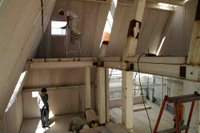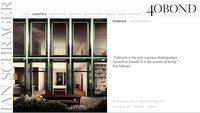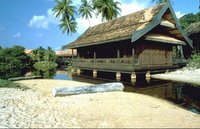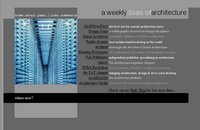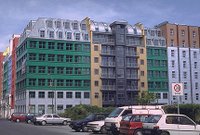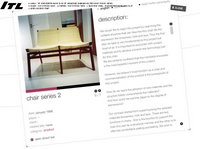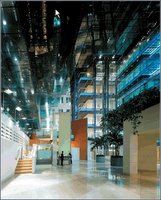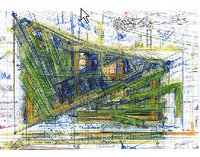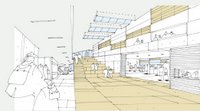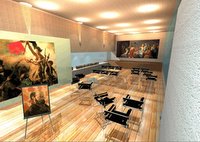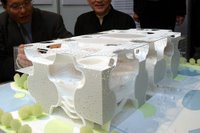 It is very important for a design firm to have a spinal philosophy supporting its' work and design. The understanding of design, the methodology used, the philosophy behind is the heart of design. Morphosis is one of the firm I favoured.
It is very important for a design firm to have a spinal philosophy supporting its' work and design. The understanding of design, the methodology used, the philosophy behind is the heart of design. Morphosis is one of the firm I favoured.
The design philosophy of Morphosis:-
"At Morphosis, our method has always been highly intuitive and reflexive, We understand our arena of operation to be one marked by contradiction, conflict, change, and dynamism. And to that end we are interested in producing work that contributes to the conversation, that adds yet another strain to what some may bear as the cacophony of modern life. We hear it as the music of reality. Additional strains layered into the composition will not intensify a cacophony, but add to an exquisite complexity. Our interest is not in deconstruction as a response to complexity and contradiction, but rather it is better described as an interest in reconstruction. Our concern is to establish and work within coherencies or orders which are open-ended and multivalent, organizations that may require more than a cursory examination to discern. While we do proceed with our work through rigorous process, we are constantly on guard to protect an opening for the unpredictable and the unknowable to affect that process so that it is ultimately open-ended and reflexive rather than visionary and pre-conceived.
I suppose that our method does somewhat resemble that of Canetti’s dog-like writer- obsessed with sticking his damp nose into everything, insatiably turning over the earth only to come back to dig it up once again. At time when prudence and precedent might dictate a rolling up of drawings and a laying down of pencils, our office is often just beginning to attack the problem from another angle. Our habit is to turn the question and answer paradigm around as we investigate and reinvestigate our initial response. The question is understood to be open as subject to change’ the work is imbued with the process of grappling with the question rather than with providing a fixed solution. We have found that in order to produce an authentic work of architecture it is often necessary to rephrase and rework the original questions.
How do we rephrase the questions? Where do we look for inspiration? How do we collaborate to produce a building that synthesizes the needs of the owners and users while remaining a “meaningful addition to Tampa’s architectural landscape?”
Our approach to any project is to immediately involve all parties in a creative collaboration to define and understand the scope and the specific objectives of the project. Intensive meetings with the client, end-users, government agencies, and consultants are held with the goal of reaching a consensus regarding the functions of various parts of the project. Out of these intensive meetings clarity of purpose and a coherent set of ideas can be established to guide the project’s development so the design that develops will be mutually gratifying and successful. The process can and must be a collective endeavor. To assure a successful outcome we have developed a working method that involves the extensive use of large-scale physical and computer models. Morphosis’ design studio is a fully networked CAD system with the ability to collaborate with various team members and consultants via modem. Models are developed at every logical step as decisions are made or changed so that the participants in the process have a three-dimensional object or simulation to help them visualized the design solution.
While the programmatic aspects of the project are being defined, our designers begin their assessment of the contextual issues. The context will be assessed on both micro and macro levels. Theses contextual “readings”, although subjective, are balanced through a combination of the local indigenous reading provided by our client group and the “outsider” perspective of Morphosis. Our design process begins with a question/answer paradigm, researching the antecedents and precedents of previous “answers” in order to identify the salient issues. Theses ideas form the basis of our inquiry. What is the civic identity of Tampa? How does Tampa in general and in particular articulate its ideals in formal language? What are the sign systems at work that are taken for granted, overlooked and yet understood intuitively? What is tooo literal, overt and consequently banal and trivializing, and alternately what is too esoteric, vague, or obscure a reference? As we examine and absorb the local idioms and syntax, the architectural language becomes layered with meaning that is connected to the city’s place and time and provides an armature for development."
to find out more of the work...
passage & Image located from http://www.morphosis.net/morph.html Image is of San Francisco Federal Building
 It is a very sad news to find out the pushpull forum had been closed indefinitely. The reason is lack of critiques and discussion of Architecture and Design and too much technical approach on sketchup techniques.
It is a very sad news to find out the pushpull forum had been closed indefinitely. The reason is lack of critiques and discussion of Architecture and Design and too much technical approach on sketchup techniques. 